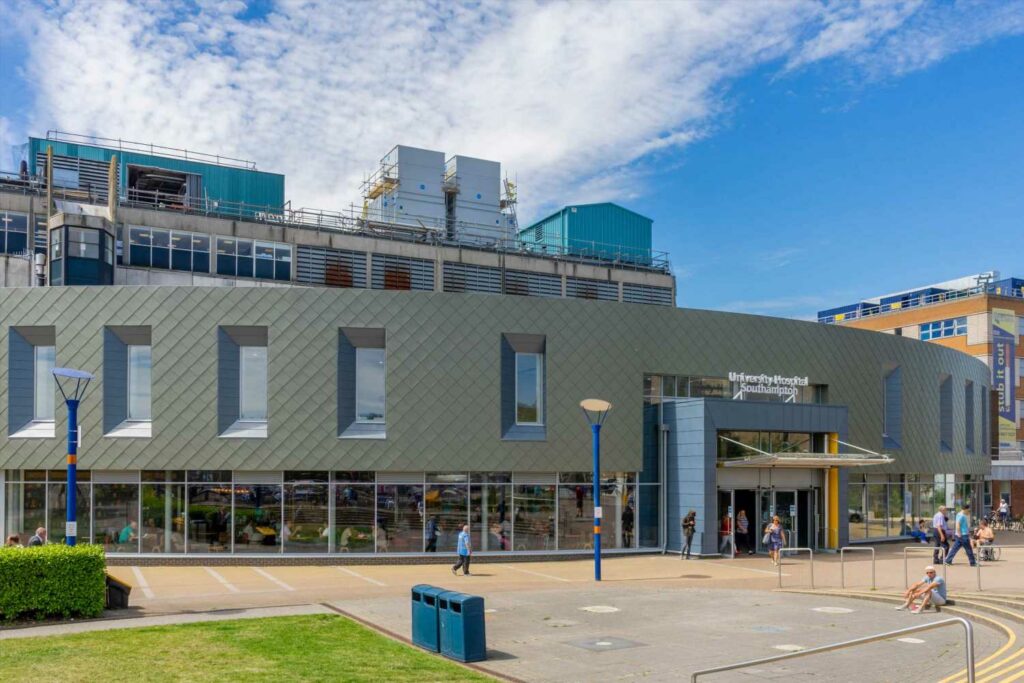Thousands in danger as more NHS hospitals found to be at risk of crumbling concrete | The Sun

THOUSANDS of NHS staff and patients are in danger as more hospitals have been found to be at risk of crumbling concrete.
Around 43,000 staff work at seven hospitals that are already known to have reinforced autoclaved aerated concrete (RAAC), according to an investigation.
The sites have a catchment area of up to 1.9million patients.
And NHS chiefs yesterday told MPs more hospitals may have found the dangerous material after the health service issued a letter to review their buildings earlier this week.
Liberal Democrat leader Ed Davey said: “It is frankly a national scandal that so many people live in areas with hospital buildings at risk of collapse.
“Hard-working doctors and nurses were the heroes of the pandemic, and deserve better than to work in unsafe conditions under roofs at risk of collapse.
Read more on health
Fears homes have crumbling RAAC concrete as councils issued warning
Cops to launch criminal probe into dozens of newborn baby deaths at hospitals
“This feels like a disaster waiting to happen with the NHS. There is no time to waste when NHS staff and patient safety is a risk.”
RAAC is a type of cheap, lightweight concrete that was used in British construction from the 1960s to 1990s.
It has a shelf-life of 30 years and is behind the current crisis in schools, with hundreds of buildings found to be at risk of collapse.
The Lib Dem analysis looked at seven hospital trusts affected by the material.
Most read in Health

Warning to millions with high blood pressure when taking naps over killer risk

My chest muscles ripped in half & rolled up to my neck after botched boob job

Woman died after shedding 10st in a year as rapid weight loss ‘shut down body’

Urgent alert over Victorian diseases poised to surge as new school term starts
University Hospital Southampton had the largest number of patients, with 468,295 living in its catchment area.
It was followed by Blackpool Teaching Hospitals at 316,122 and the Queen Elizabeth Hospital in King’s Lynn with 249,000.
Overall, the NHS is aware of 41 buildings that have RAAC on site, including seven that require complete demolition before 2030.
However, NHS England chief financial officer Julian Kelly admitted there could be many more.
Speaking in front of the Parliamentary Accounts Committee, he said dozens of other hospitals have discovered the material may be in their buildings.
Mr Kelly said: “We have recently gone out to all NHS trusts and asked people to confirm again if they are confident they don’t have RAAC or if they do.
“There are a number of trusts that have come forward and said that they think they potentially do have RAAC.”
He confirmed the exact number was “more in the tens, than hundreds” and would be confirmed over the coming weeks.
All buildings with RAAC will be eradicated by 2035, he said.
Miriam Deakin, of NHS Providers, said: “Trust leaders repeatedly warned that RAAC presented major risks to the safety of patients, staff and services.
Read More on The Sun
Katie Price risks Peter Andre’s wrath as Princess, 16, seen with shot
Shopper shares best time to nab yellow-sticker food deals in Sainsbury’s
“Investment is now being made available through the New Hospital Programme with the seven most critically-affected RAAC trusts due to be replaced by 2030.
“It is worrying for patients and staff that those with remaining RAAC may have to wait as long as another 12 years before this unsafe concrete will be eradicated from their buildings.”
Source: Read Full Article




